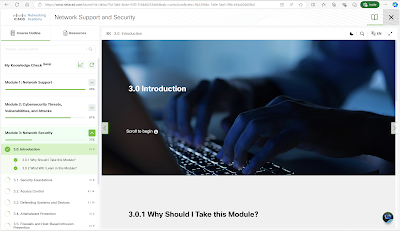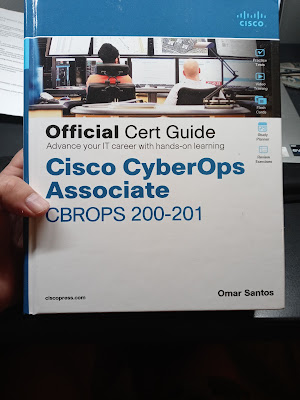Studying for CCNA Update
It has been a while since I have written a post about studying for Cisco's CCNA IT certification.
To be honest, progress has been slow.
However, there are reasons for that.
Back in late December 2024, I had just completed the reading the following chapters in the CCNA 200-301 Official Cert Guide, Volume 1, Second Edition by Wendell Odom, CCIE No. 1624.
- Part One: Introduction to Networking
- Chapter 1: Introduction to TCP/IP Networking
- Chapter 2: Fundamentals of Ethernet LANs
- Chapter 3: Fundamentals of WANs and IP Routing
- Part Two: Implementing Ethernet LANs
- Chapter 4: Using the Command-Line Interface
- Chapter 5: Analyzing Ethernet LAN Switching
- Chapter 6: Configuring Basic Switch Management
- Chapter 7: Configuring and Verifying Switch Interfaces
I also completed the exercises for Chapters 4, 5, 6, and 7 in Pearson Vue's CCNA Network Simulator training program. Furthermore, I even completed all of the exercises for Chapters 4, 5, 6, and 7 on Wendell Odom's CCNA Skills Blog. Do you need to use Pearson Vue's CCNA Network Simulator while studying for the CCNA IT certification? No, you don't. However, the CCNA Network Simulator does come with A LOT of guided practice exercises to get you experience using Cisco's IOS command-line interface for configuring switches and routers. In other words, using Pearson Vue's CCNA Network Simulator is completely optional. However, I believe that the money spent on Pearson Vue's CCNA Network Simulator is money well spent.
For CCNA study, Wendell Odom's CCNA Skills Blog is also entirely optional. The CCNA Skills Blog contains a lot of good resources for studying CCNA. Moreover, the CCNA Cert Skills Blog also features Wendell Odom's own CCNA practice exercises. While Pearson Vue's Network Simulator is a simulation, Wendell Odom's networking exercises require you to use Cisco's Packet Tracer program. Unlike the Network Simulator, Wendell Odom's networking exercises are entirely free. Plus, Cisco offers Packet Tracer as a free download from its website. You do have to create an account with Cisco to download Packet Tracer, however. It's irritating, but Packet Tracer is an invaluable program to have in your CCNA study.
What was the problem?
Despite reading the first seven chapters in the textbook and completing all of the exercises, what was the problem?
Since I had recently earned four training badges from Cisco Networking Academy (see previous post here), I was probably feeling a little too high and mighty when it came to basic networking. Thus, when it came to reading Chapters 4, 5, 6, and 7 in the CCNA 200-301 Official Cert Guide, I just read through the chapters without taking any notes. I was about to start Chapter 8: Implementing Ethernet Virtual LANs, when I realized that I probably committed a mistake by not taking any notes while reading those four chapters.
 |
| Chapter 4 from the CCNA Official Cert Guide |
 |
| Chapter 5 from the CCNA Official Cert Guide |
 |
| Chapter 6 from the CCNA Official Cert Guide |
 |
| Chapter 7 from the CCNA Official Cert Guide |
Thus, I made the decision to RE-READ all four chapters and TAKE COPIOUS NOTES. After re-reading each individual chapter, I went back to the Pearson Vue Network Simulator and completed the exercises for each chapter. To be sure, it was A LOT of work and required a lot of extra time. However, it was a necessary review to complete.
 |
| Chapter 8 from the CCNA Official Cert Guide |
 |
| Pearson Vue Network Simulator Chapter 8 Exercises |
Now that I have completed reading and taking notes on Chapter 8 in the CCNA 200-301 Official Cert Guide, I have been slowly completing all of the Network Simulator exercises for Chapter 8. The Network Simulator contains three types of exercises for Chapter 8.
- Skill Builders
- Configuration Scenarios
- Troubleshooting Scenarios



































